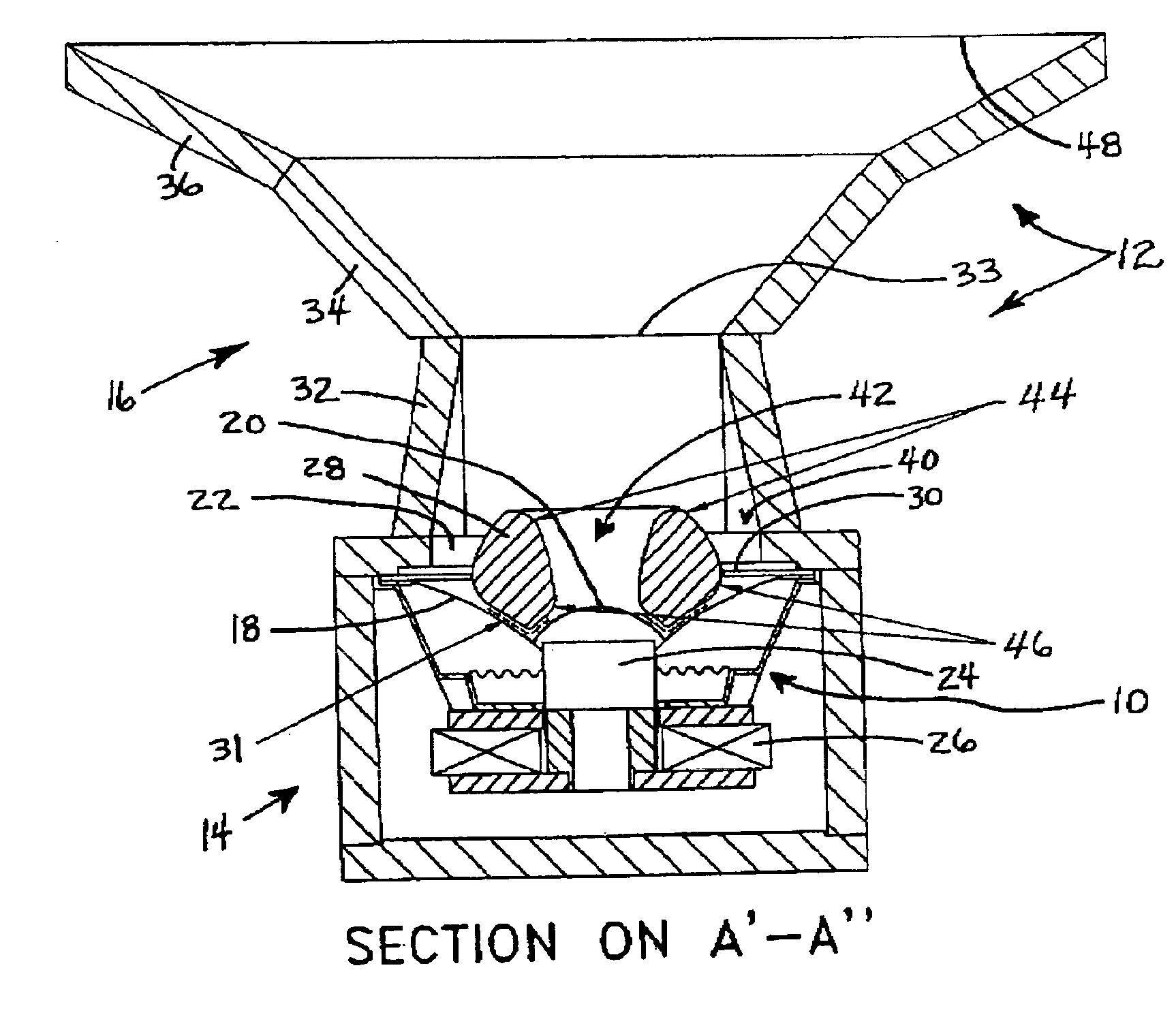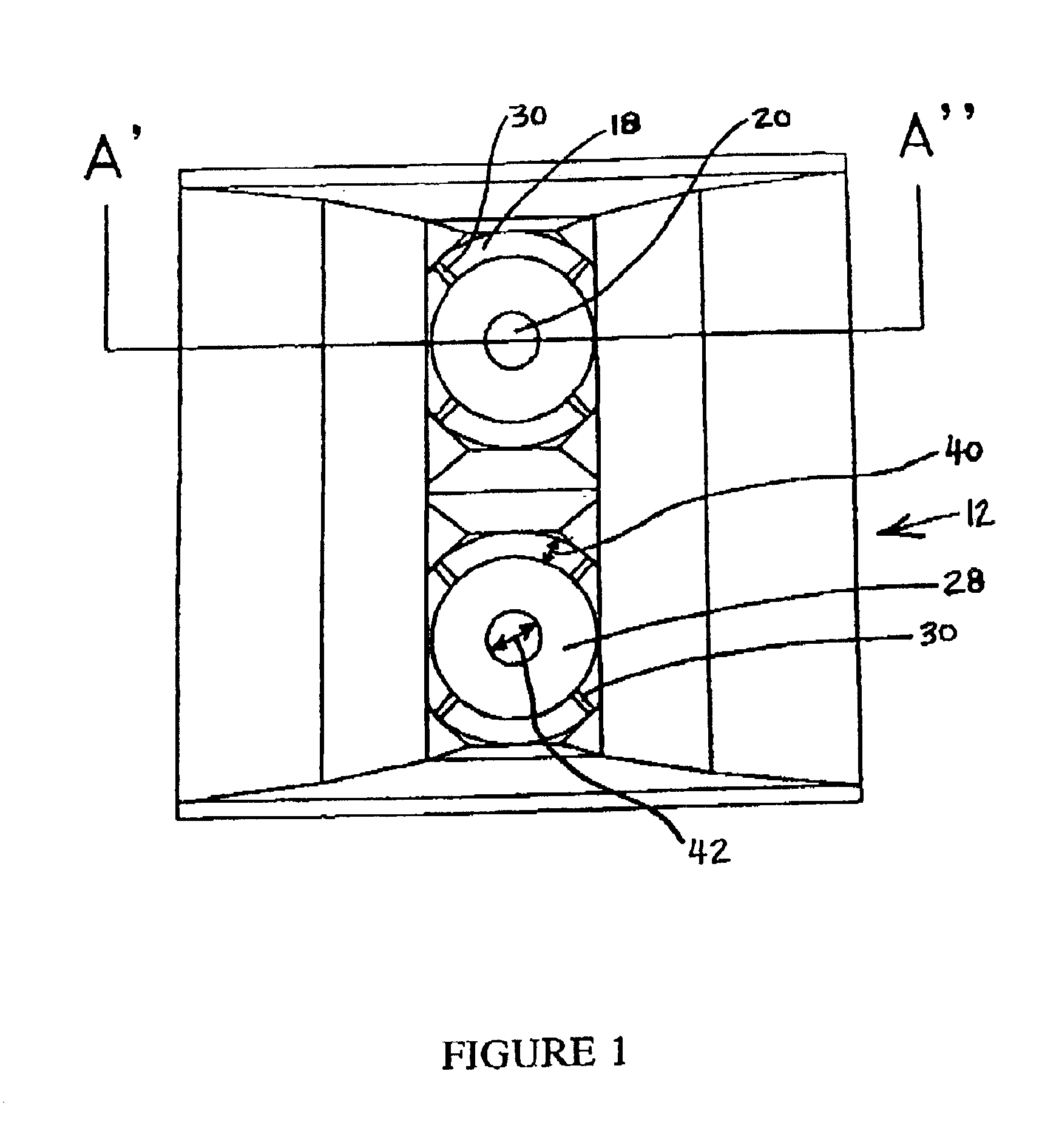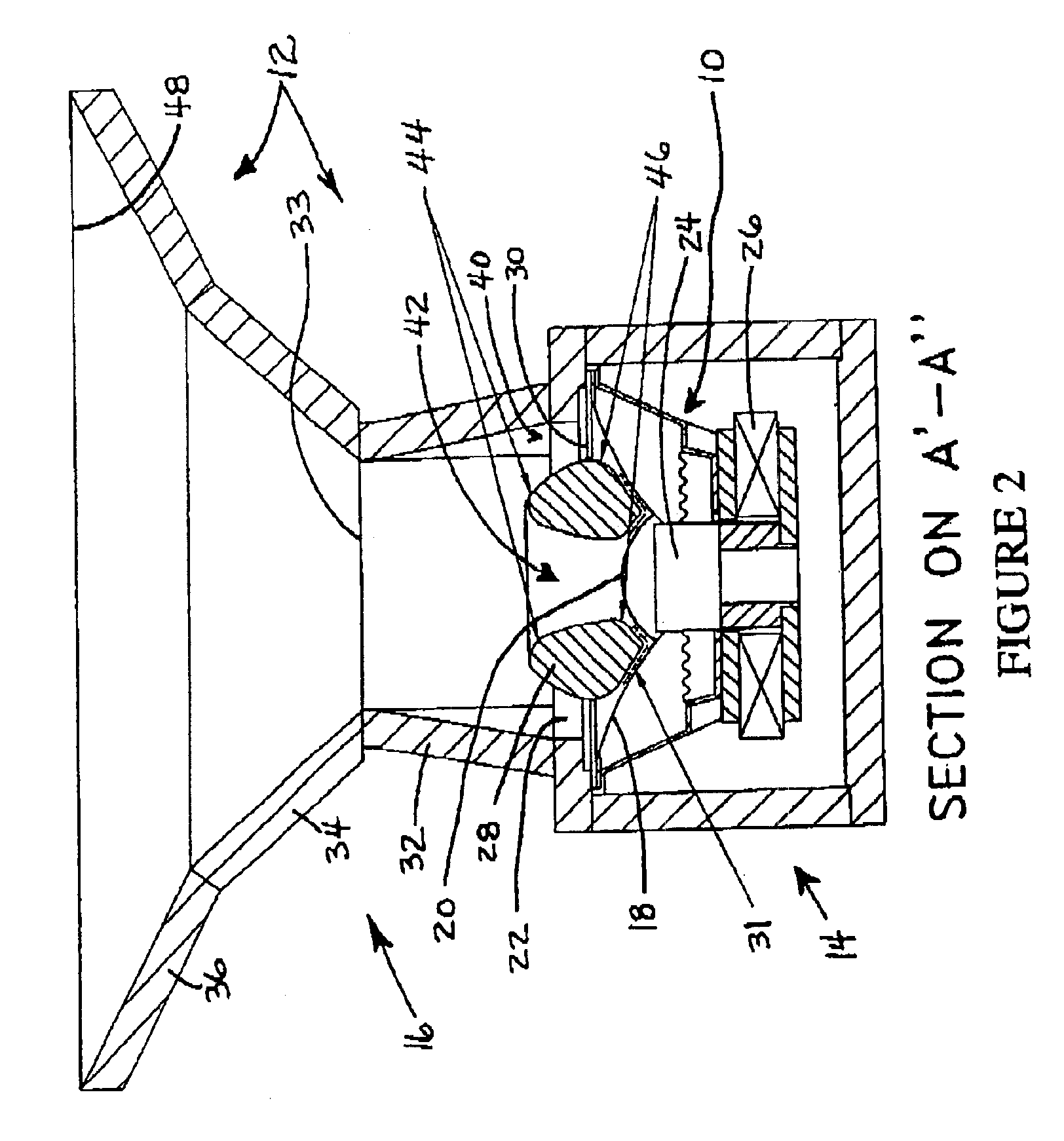Directional loudspeaker unit
a loudspeaker unit and directional technology, applied in the direction of transducer details, electrical transducers, electrical apparatus, etc., can solve the problem of difficulty in achieving constant directivity, and achieve the effect of constant directivity
- Summary
- Abstract
- Description
- Claims
- Application Information
AI Technical Summary
Benefits of technology
Problems solved by technology
Method used
Image
Examples
Embodiment Construction
[0031]As shown in FIGS. 1 and 2, in the first embodiment a pair of cone loudspeakers generally designated 10 are mounted within a housing generally designated 12. The housing 12 has a rectangular box portion 14 and an integral rectangular horn portion 16 common to both speakers 10. The pair of cone loudspeakers 10 are mounted in tandem on a front side of the rectangular box portion 14 such that the respective cone 18 and centred dust dome 20 of each loudspeaker face outwardly through an aperture 22 forming the mouth (throat) of the horn 16. As can be seen from FIGS. 1 and 2 together, the aperture 22 is approximately circular, and substantially equal in diameter to the circular cone 18. As shown in the cross-sectional view of FIG. 2, each cone 18 is connected to a former 24 which oscillates at the frequency of a signal being applied to a magnetic coil 26.
[0032]In front of each cone 18 a generally-toroidal phase plug 28 is mounted by webbed support members 30 to sit in the plane of th...
PUM
 Login to View More
Login to View More Abstract
Description
Claims
Application Information
 Login to View More
Login to View More - R&D
- Intellectual Property
- Life Sciences
- Materials
- Tech Scout
- Unparalleled Data Quality
- Higher Quality Content
- 60% Fewer Hallucinations
Browse by: Latest US Patents, China's latest patents, Technical Efficacy Thesaurus, Application Domain, Technology Topic, Popular Technical Reports.
© 2025 PatSnap. All rights reserved.Legal|Privacy policy|Modern Slavery Act Transparency Statement|Sitemap|About US| Contact US: help@patsnap.com



